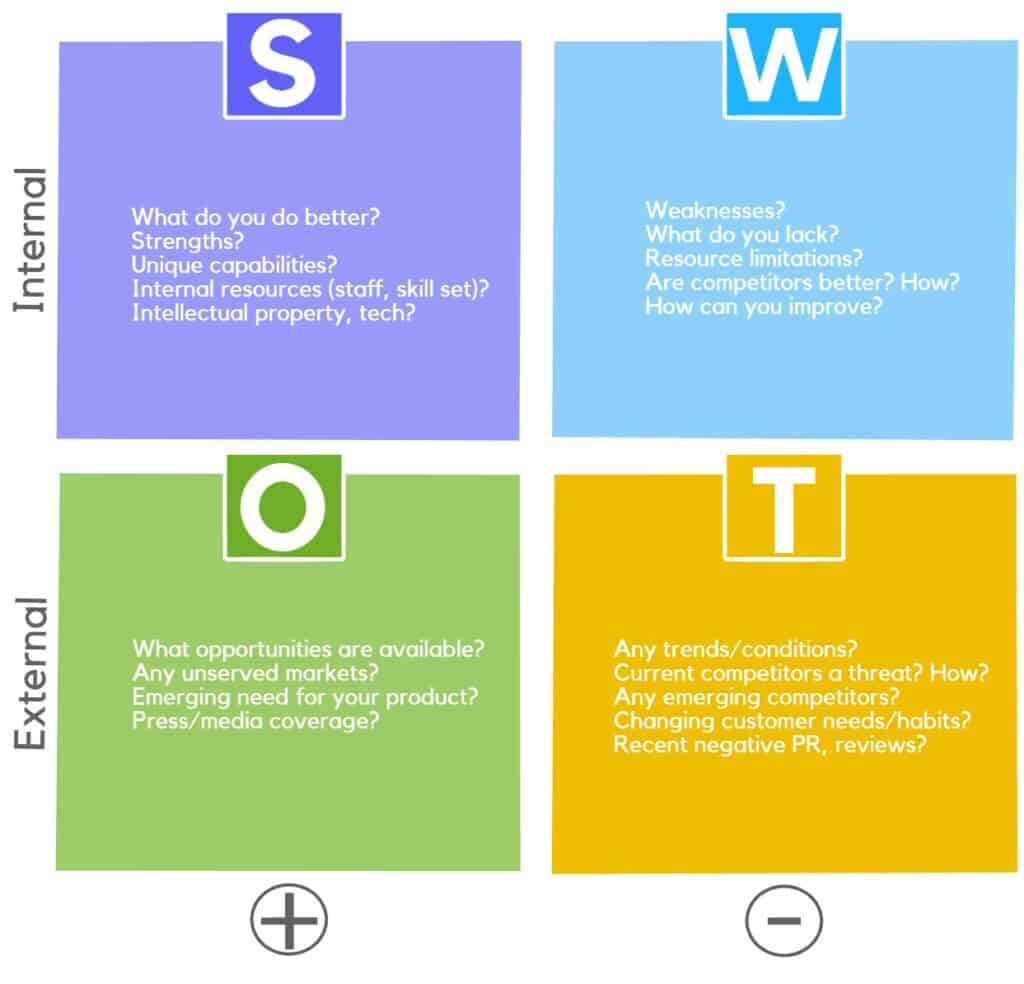The business world is so competitive that business strategies are imperative for survival. They are the reason some establishments appear to perform better than others. However, knowing where to draw the line with creating designs is essential as too many approaches could be problematic.
There is no ideal number of strategy recommendations for a business. However, most business owners choose to have no more than one to three strategies as various methods fit every business type depending on its unique features, goals and objectives. It is not the number of strategies but the effectiveness that counts.
As entrepreneurship advances, people continue to create amazing business ideas every day. However, do the proliferating business ideas equate to or influence the number of strategies a business should have? This article will answer the question, “how many strategies should a business have?” So read on to learn more!
Is There a Magic Number of Strategies for a Business?
All businesses are different and require unique approaches. As a result, an establishment can create as many strategies as will benefit it. However, since the primary aim of developing business strategies is to survive the competition, it is preferable to stick to the basics. Therefore, a business requires no more than one among the essential types of business strategies.
Essentially, there is no magic number of business approaches because the law of focus recommends just one. The reason is that the leaders have a chance to fine-tune their strategy toward execution to make the plan effective. They can stir the business toward its ultimate goal and objectives.
For instance, an establishment might have customer retention as its overall goal or market penetration. Either way, the company can only implement one method for achieving its desired objective.
Every establishment has a specific goal and uses different methods to reach them. However, the chosen method depends on factors unique to the organization. As a result, three primary strategy levels exist among which companies choose what works for them.
The next section explains the fundamental business strategies you should know to understand which methods work better for your organization.
How Many Levels of Strategy is Ideal?
Proper alignment with company goals is critical for the success of any establishment. Therefore, a good understanding of business strategy levels is a no-brainer. Organizational management requires various methods and approaches to decision-making.
Essentially, strategy in business refers to action plans that the leadership of any organization creates and implements toward achieving the establishment’s goals. It is also the entire direction and blueprint for an organization to chart the course of action for reaching its desired goals and objectives. Therefore, detailed planning for various activities needs to be carried out.
A good strategy is a comprehensive approach that captures an organization’s preparedness to handle future situations and unforeseen circumstances. Therefore, knowledge of the fundamental levels of business strategies and how they work is critical for deciding how many strategies a business should have.
Corporate-Level Strategy
The senior members of the organization manage the corporate-level strategy. This level defines the organization’s long-term objectives and coordinates all underlying units within the company. It is the highest and most extensive model for charting all organizational programs.
The corporate level works better for businesses that are more diversified with multiple levels of operation. An excellent example is a business that manufactures and sells products where one arm of the company takes charge of the manufacturing process, and the other arm takes care of the product sales.
Here are a few things to do when designing your corporate strategy:
Identify the Overall Mission and Vision of Your Organization.
No establishment can succeed without a mission and vision. They form the foundation of the entire business, which is why they are essential ingredients for the corporate level. Essentially, your mission statement defines the essence of your establishment or the reason for its existence.
It also describes the modalities for differentiating the organization from others in a competitive niche. In contrast, the business’s vision statement defines the organization’s future.
Set Up Your Corporate Objectives
Corporate objectives define the highest goals to assist the organization’s members with achieving its mission and vision. In other words, the corporate objectives serve as a metric for achieving the corporate mission and image of the establishment.
Business-Level Strategy
The business level is coordinated by the senior and unit members of the organization. Its goal is to sustain the firm’s ability to compete favorably with similar firms in the market. Business strategies target elevating the business’s competitive advantage and maintaining its uniqueness.
Strategic managers utilize this model to create a sequence or system for managing and allocating company resources toward sustaining a competitive edge. The managers in the organization are saddled with the responsibility of transforming the mission and vision of the organization into tangible actions.
It is akin to designing the schematics for operation within the organization. Business level models work for both singular and diversified companies but are subject to the structure of our firm.
However, as your company advances through the business level, it is paramount to ensure that you can monitor the progress of all aspects of the business. This way, you can identify areas of structural deficiency and fix them.
Here is something you should do while you work on your business-level strategy:
Separate Your Business From Your Competition
A SWOT analysis is invaluable for setting your business apart from the competition. The SWOT analysis allows you to identify your business strengths, weaknesses, opportunities and threats. This way, you can create an approach unique to your organization, as every organization is different.

Set Up Targets That Support the Business and Corporate Levels of the Firm
You must set up targets that align with your business objectives and initiatives at the corporate and business levels.
Top Critical Approaches for Executing an Effective Business-Level Strategy
Essentially, every business has critical approaches to winning over the competition in the market. They include but are not limited to cost leadership, differentiation and focus. In addition, the business level allows you to consider the cost and benefits of every business unit. This way, you can identify where to channel your resources for business transformation.
Cost Leadership
Businesses utilize cost leadership as a business-level strategy to increase customer base and get ahead of the competition through lower price action. Several people misconstrue this concept as detrimental to business profitability through lower returns.
However, businesses leverage several internal efficiencies to supply products and services at the lowest price while increasing sales and customer base through compound interest.
A critical internal factor for adjustment to facilitate cost leadership is reducing the cost of production and keeping the price as low as possible shields your business from business rivalry and new entrants who want to increase your competition. Also, it helps keep your customers loyal to you.
Here is a table summarizing the pros and cons of cost leadership.
| Pros | Cons |
| It increases profits by compounding interests. | It requires a massive sales volume to generate profit. |
| It increases your chances of progressively dominating the market over time. | It is capital intensive to begin your business by covering the costs. |
| It improves your business stability. | It exposes your business to sudden risks due to high cutting costs. |
| It increases customer loyalty. | Your focus on cost reduction can cause you to overlook customer needs. |
| The approach may be easy for rivals to replicate. | |
| The emergence of new technologies can reduce or eliminate your competitive advantage. |
Differentiation
It is a business-level strategy employed by organizations to stay ahead of the competition through their uniqueness. Most companies usually charge a premium to cater to the cost of originality.
Common mechanisms for business differentiation include but are not limited to:
- Providing superior quality
- Superior customer service
- Premium product designs
- Product uniqueness, etc.
Here are some of the pros and cons of differentiation.
| Pros | Cons |
| Customers can easily become your fans through brand loyalty. | Your higher price might scare your customers away. |
| It makes marketing easy to execute. | Some of your product’s unique features can be easily copied by your rivals. |
| You can potentially generate a higher return on investment through premium pricing. | It requires extensive market research and analysis. |
| It involves a higher cost of production. | |
| Excessive differentiation may alienate your customers from your products. |
Focus
The focused strategy includes focused cost leadership and focused differentiation.
In focused cost leadership, the organization stands out by concentrating on serving a niche market through the following mechanisms:
- Serving a select group of customers
- Meeting the needs of a smaller target market
- Uniquely reducing costs to provide market needs.
Focused cost leadership benefits an organization by increasing brand awareness at a lower cost. However, it could cost your business future growth due to over-specialization.
Conversely, the focused differentiation strategy competes by offering unique features to a small market through the following mechanisms:
- Concentrating on a narrow subset of the market
- By focusing on aspects of the market with the weakest competition
- Through product substitution
The focused differentiation strategy benefits a firm by limiting the competition and building customer loyalty, where you can charge higher prices. However, it can determine the demand for your products and your focused niche might not be sustainable.
The Hybrid Business Strategy
It is a mélange of cost leadership and differentiation. It involves the production of low-cost products using differentiated mechanisms. Therefore the hybridization stems from fusing the best features of the leading business level strategies (cost leadership and differentiation) to achieve competitive advantage.
The hybrid strategy appeals to customers by offering a product that neither costs too high nor too low while standing out with some unique features. Even though businesses employing the hybrid approach organically generate a large customer base, people would prefer such a business style to cheap ordinary products, as it poses considerable risk.
The downside of the hybrid approach is that it requires significantly high investment capital to reduce cost, sometimes using automation and differentiating the product to attain considerable uniqueness.
Here are the Pros and cons of the hybrid approach.
| Pros | Cons |
| It could increase the customer base through varied options. | The business might feel stuck over time as products are not cheap enough to compete with the major cost leaders and are not significantly differentiated to be ahead of the competition. |
| The business approach is adaptable to any business time and season. | It poses a significantly high cost of production with the challenge of reducing cost and differentiating at once. |
| It enables you to create a unique business in cost and product features. |
Functional Level Strategy
This level is also known as a departmental level strategy as it involves the various departments that exist in the organization. It also involves the daily operations within the company to achieve the organizational goals (corporate strategy).
The idea behind this approach to business is to concentrate on a specific aspect of the industry, such as production, marketing and sales, finance, etc. The essence of the functional strategy is to facilitate the attainment of organizational goals through efficient resource allocation, utilization and management.
The functional level mostly concerns the operations level of the firm, such as human resources, production, etc. As a result, the project managers or department heads are usually in charge of the functional level.
Here are a few things to keep in mind while implementing the functional level approach:
- The functional level is the most detailed approach in strategic management as it involves hands-on experience like project management. This way, everyone remains aware of their duties and responsibilities.
- Your functional level goals should always align with the corporate level goals to drive the overall organization goals.
Operational Level Strategy
At this level, business strategies are transformed into actionable implementation plans. Operating managers spearhead it.
This level is essential because it provides the basic classification to enable organizations to choose and organize their structural pattern to align with their highest goals. This way, companies can chart their operational course according to their specific situations.

What Are the General Characteristics of a Strategy?
If you struggle with refining your strategy or perhaps confuse it with other business operational essentials, this list will acquaint you with the major features of a real business strategy.
- They are usually concerned with the long-term objectives of the organization.
- They define the overall course of action to attain organizational goals.
- They are never static and change to suit the current situations.
- They provide administrative direction while appropriately combining internal and external entrepreneurial factors.
- They enable the appropriate management and allocation of scarce resources.
Frequently Asked Questions
How Do You Define Strategy Tools?
Strategy tools are the methods, techniques, or elements organizations and individuals use to create their strategies. These tools assist those who use them to maintain an organized framework for every situation.
What Makes a Business Model Different From a Strategy?
A business model refers to the rationale behind an establishment’s functionality or operational procedure. In contrast, a business strategy is a selected model for which the organization intends to survive the market competition.
What Does PESTLE Mean in Strategic Management?
PESTLE means political, economic, sociological, technological, legal, and environmental. It is a form of analysis that organizations employ to study how external factors influence the firm’s internal workings, especially in the decision-making process.
How Many Strategies Should a Business Incorporate When Using the Situation Framework?
When considering the company situation framework use, it’s essential for a business to incorporate multiple strategies. By utilizing a range of tactics, a business can adapt to various scenarios and ensure a comprehensive approach to decision-making. Having multiple strategies in place can help a company navigate through uncertain and challenging situations.
Final Thoughts
No two businesses are the same even when they produce the same products or services. As a result, every organization requires critical analysis that reflects its peculiarity when deciding on a business strategy or model. Hopefully, this article provides the requisite guide on what and how many strategies you need.





